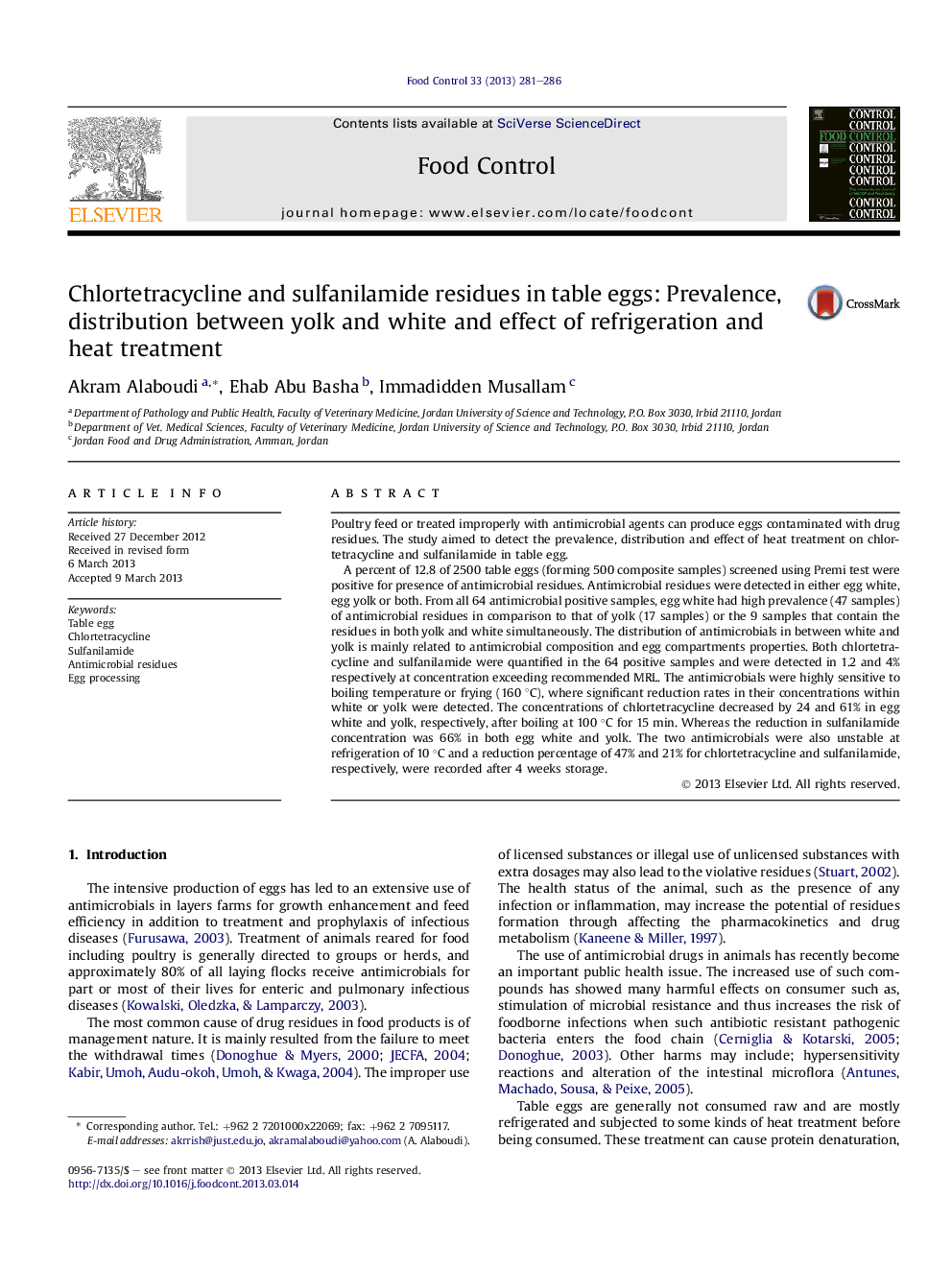| Article ID | Journal | Published Year | Pages | File Type |
|---|---|---|---|---|
| 6392537 | Food Control | 2013 | 6 Pages |
Abstract
A percent of 12.8 of 2500 table eggs (forming 500 composite samples) screened using Premi test were positive for presence of antimicrobial residues. Antimicrobial residues were detected in either egg white, egg yolk or both. From all 64 antimicrobial positive samples, egg white had high prevalence (47 samples) of antimicrobial residues in comparison to that of yolk (17 samples) or the 9 samples that contain the residues in both yolk and white simultaneously. The distribution of antimicrobials in between white and yolk is mainly related to antimicrobial composition and egg compartments properties. Both chlortetracycline and sulfanilamide were quantified in the 64 positive samples and were detected in 1.2 and 4% respectively at concentration exceeding recommended MRL. The antimicrobials were highly sensitive to boiling temperature or frying (160 °C), where significant reduction rates in their concentrations within white or yolk were detected. The concentrations of chlortetracycline decreased by 24 and 61% in egg white and yolk, respectively, after boiling at 100 °C for 15 min. Whereas the reduction in sulfanilamide concentration was 66% in both egg white and yolk. The two antimicrobials were also unstable at refrigeration of 10 °C and a reduction percentage of 47% and 21% for chlortetracycline and sulfanilamide, respectively, were recorded after 4 weeks storage.
Related Topics
Life Sciences
Agricultural and Biological Sciences
Food Science
Authors
Akram Alaboudi, Ehab Abu Basha, Immadidden Musallam,
